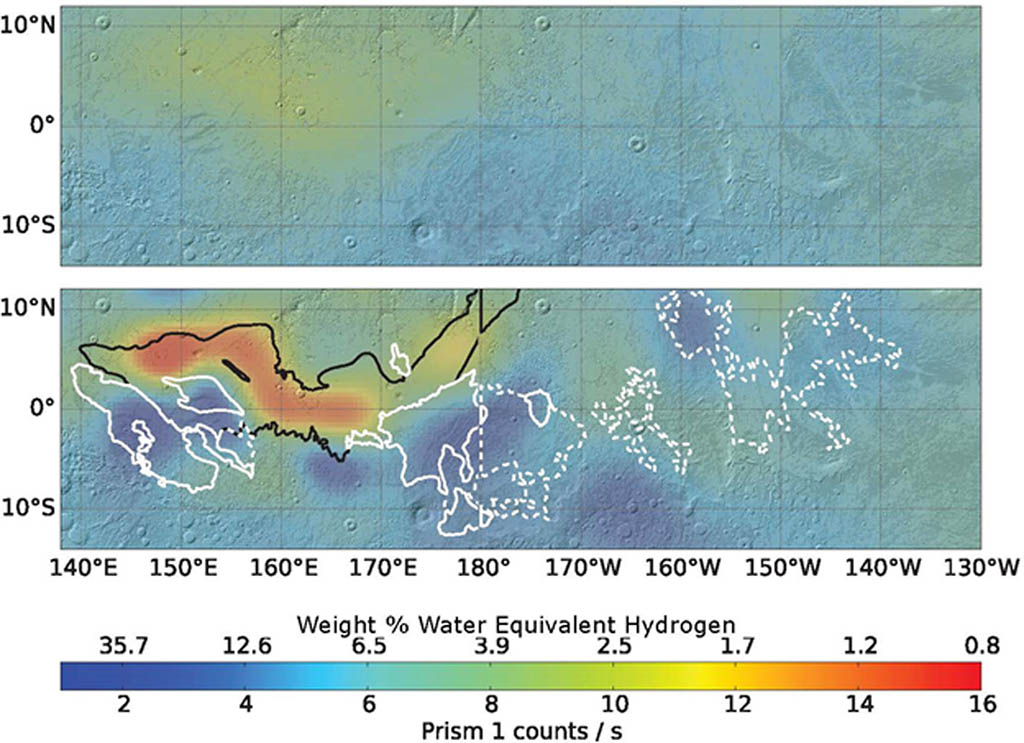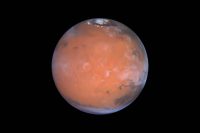Re-analysis of 2002-2009 data from a hydrogen-finding instrument on NASA’s Mars Odyssey orbiter increased the resolution of maps of hydrogen abundance. (NASA/JPL-Caltech/Univ. of Arizona)
Home Re-analysis of 2002-2009 data from a hydrogen-finding instrument on NASA’s Mars Odyssey orbiter increased the resolution of maps of hydrogen abundance. (NASA/JPL-Caltech/Univ. of Arizona) Re-analysis of 2002-2009 data from a hydrogen-finding instrument on NASA's Mars Odyssey orbiter increased the resolution of maps of hydrogen abundance. (NASA/JPL-Caltech/Univ. of Arizona)



